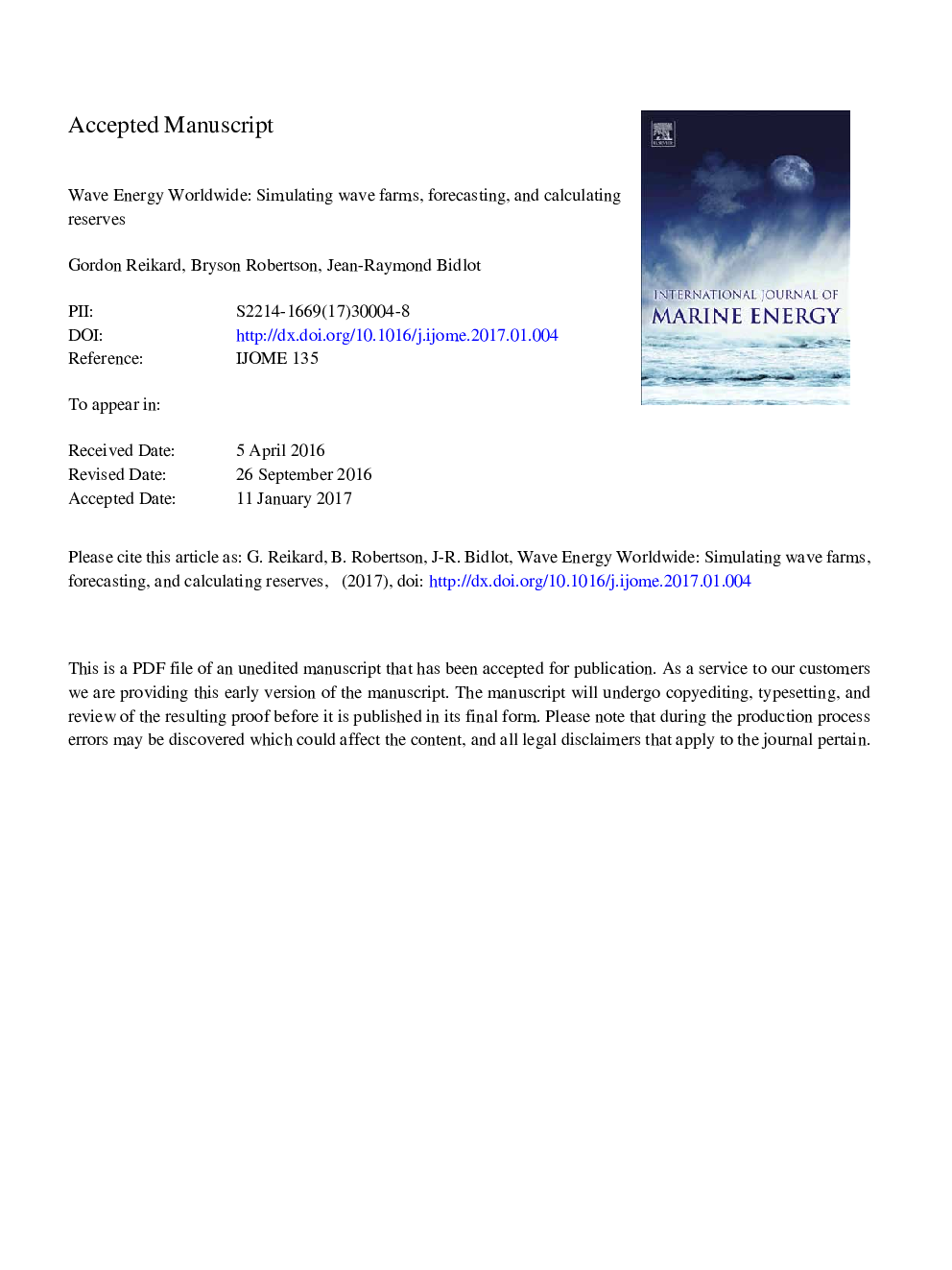| کد مقاله | کد نشریه | سال انتشار | مقاله انگلیسی | نسخه تمام متن |
|---|---|---|---|---|
| 5473556 | 1520418 | 2017 | 89 صفحه PDF | دانلود رایگان |
عنوان انگلیسی مقاله ISI
Wave energy worldwide: Simulating wave farms, forecasting, and calculating reserves
ترجمه فارسی عنوان
انرژی موج در سراسر جهان: شبیه سازی مزارع موج، پیش بینی و محاسبه ذخایر
دانلود مقاله + سفارش ترجمه
دانلود مقاله ISI انگلیسی
رایگان برای ایرانیان
کلمات کلیدی
انرژی موج، مبدلها، مزارع موج، شبیه سازی، پیش بینی،
موضوعات مرتبط
مهندسی و علوم پایه
مهندسی انرژی
مهندسی انرژی و فناوری های برق
چکیده انگلیسی
This paper runs forecasting experiments for wave energy over a range of 22 sites worldwide. The wave parameters are derived from physics-based model simulations. In order to better represent the sea state variability, the model values are embedded in noise drawn from several distributions, with seasonal weights, based on wave buoy data. Converter matrices are used to calculate the power output, and the power series are aggregated to create large wave farms. Three types of wave energy converters are simulated: an attenuator, a floating heave buoy array, and an oscillating flap device. Forecasting tests are run over horizons of 1-4Â h, and reserves are calculated. By analyzing multiple sites over wide distances, it is possible to identify underlying parallels in the findings. First, despite differences in weather patterns and bathymetry, the forecast errors lie in a fairly narrow range. At the 1Â h horizon, the errors for the attenuator range from a high of 7.6 percent and a low of 4.7 percent, with a mean of 5.8 percent. The errors for the heave buoy array range from a high of 7.9 percent to a low of 2.4 percent, with a mean of 5.5 percent. The errors for the oscillating flap device range from a high of 8.9 percent to a low of 4.9 percent, with a mean of 6.5 percent. The narrow range of the errors indicates that from the standpoint of predicting wave energy, the similarities among sites outweigh the differences. Second, reserves required to balance surpluses and shortages of power are substantially lower than the costs associated with wind and solar. Using an average of the 22 sites, at the 1-h horizon, capacity-up reserves (needed to offset power deficits) range from 5.1 to 6.2 percent of the power. Capacity-down reserves (needed to offset power surpluses) range from 5.4 to 6.9 percent of the power. Third, forecast accuracy shows a mild inverse relationship to the wave energy - all other things being equal, higher energy sites are more difficult to predict. However, the main determinant of forecast accuracy is the probability distribution. When the distribution has heavy tails, forecast errors and reserve costs are higher. Taken together, these factors account for 70 percent of the forecast error.
ناشر
Database: Elsevier - ScienceDirect (ساینس دایرکت)
Journal: International Journal of Marine Energy - Volume 17, April 2017, Pages 156-185
Journal: International Journal of Marine Energy - Volume 17, April 2017, Pages 156-185
نویسندگان
Gordon Reikard, Bryson Robertson, Jean-Raymond Bidlot,
